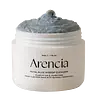What's inside
What's inside
 Key Ingredients
Key Ingredients

 Benefits
Benefits

 Concerns
Concerns

 Ingredients Side-by-side
Ingredients Side-by-side

Avena Sativa Seed Water 30%
SolventWater
Skin ConditioningSodium Cocoyl Isethionate
CleansingCoco-Glucoside
CleansingGlycerin
HumectantGlyceryl Stearate
EmollientButylene Glycol
Humectant1,2-Hexanediol
Skin ConditioningCoconut Acid
CleansingSodium Methyl Cocoyl Taurate
CleansingArachidyl Alcohol
EmollientHydroxypropyl Starch Phosphate
Coco-Betaine
CleansingAvena Sativa Kernel Flour
AbrasiveBehenyl Alcohol
EmollientSodium Isethionate
CleansingSodium Chloride
MaskingArachidyl Glucoside
EmulsifyingArginine
MaskingCaprylyl Glycol
EmollientCapryloyl Salicylic Acid
ExfoliatingAniba Rosodora Wood Oil
AstringentPentylene Glycol
Skin ConditioningMalt Extract
Skin ProtectingGlucose
HumectantPueraria Lobata Root Extract
HumectantPinus Palustris Leaf Extract
TonicUlmus Davidiana Root Extract
Skin ConditioningOenothera Biennis Flower Extract
AstringentCitric Acid
BufferingLinalool
PerfumingEthylhexylglycerin
Skin ConditioningAvena Sativa Seed Water 30%, Water, Sodium Cocoyl Isethionate, Coco-Glucoside, Glycerin, Glyceryl Stearate, Butylene Glycol, 1,2-Hexanediol, Coconut Acid, Sodium Methyl Cocoyl Taurate, Arachidyl Alcohol, Hydroxypropyl Starch Phosphate, Coco-Betaine, Avena Sativa Kernel Flour, Behenyl Alcohol, Sodium Isethionate, Sodium Chloride, Arachidyl Glucoside, Arginine, Caprylyl Glycol, Capryloyl Salicylic Acid, Aniba Rosodora Wood Oil, Pentylene Glycol, Malt Extract, Glucose, Pueraria Lobata Root Extract, Pinus Palustris Leaf Extract, Ulmus Davidiana Root Extract, Oenothera Biennis Flower Extract, Citric Acid, Linalool, Ethylhexylglycerin
Glycerin
HumectantWater
Skin ConditioningSodium Cocoyl Isethionate
CleansingPrunus Amygdalus Dulcis Seed Meal
AbrasiveSodium Cocoyl Glycinate
CleansingCoconut Acid
Cleansing1,2-Hexanediol
Skin ConditioningSodium Methyl Cocoyl Taurate
CleansingOryza Sativa Powder
Parfum
MaskingKaolin
AbrasiveSodium Isethionate
CleansingHydroxypropyl Starch Phosphate
Glyceryl Stearate
EmollientXanthan Gum
EmulsifyingSodium Chloride
MaskingDextrin
AbsorbentEthylhexylglycerin
Skin ConditioningGardenia Florida Fruit Extract
Skin ConditioningCamellia Sinensis Leaf Extract
AntimicrobialHyssopus Officinalis Extract
MaskingGlycerin, Water, Sodium Cocoyl Isethionate, Prunus Amygdalus Dulcis Seed Meal, Sodium Cocoyl Glycinate, Coconut Acid, 1,2-Hexanediol, Sodium Methyl Cocoyl Taurate, Oryza Sativa Powder, Parfum, Kaolin, Sodium Isethionate, Hydroxypropyl Starch Phosphate, Glyceryl Stearate, Xanthan Gum, Sodium Chloride, Dextrin, Ethylhexylglycerin, Gardenia Florida Fruit Extract, Camellia Sinensis Leaf Extract, Hyssopus Officinalis Extract
Ingredients Explained
These ingredients are found in both products.
Ingredients higher up in an ingredient list are typically present in a larger amount.
1,2-Hexanediol is a synthetic liquid and another multi-functional powerhouse.
It is a:
- Humectant, drawing moisture into the skin
- Emollient, helping to soften skin
- Solvent, dispersing and stabilizing formulas
- Preservative booster, enhancing the antimicrobial activity of other preservatives
Coconut Acid isn't fungal acne safe.
Ethylhexylglycerin (we can't pronounce this either) is commonly used as a preservative and skin softener. It is derived from glyceryl.
You might see Ethylhexylglycerin often paired with other preservatives such as phenoxyethanol. Ethylhexylglycerin has been found to increase the effectiveness of these other preservatives.
Glycerin is already naturally found in your skin. It helps moisturize and protect your skin.
A study from 2016 found glycerin to be more effective as a humectant than AHAs and hyaluronic acid.
As a humectant, it helps the skin stay hydrated by pulling moisture to your skin. The low molecular weight of glycerin allows it to pull moisture into the deeper layers of your skin.
Hydrated skin improves your skin barrier; Your skin barrier helps protect against irritants and bacteria.
Glycerin has also been found to have antimicrobial and antiviral properties. Due to these properties, glycerin is often used in wound and burn treatments.
In cosmetics, glycerin is usually derived from plants such as soybean or palm. However, it can also be sourced from animals, such as tallow or animal fat.
This ingredient is organic, colorless, odorless, and non-toxic.
Glycerin is the name for this ingredient in American English. British English uses Glycerol/Glycerine.
Learn more about GlycerinGlyceryl Stearate is a mix of glycerin and stearic acid.
It is used to stabilize the mixing of water and oil ingredients. By preventing these ingredients from separating, it can help elongate shelf life. It can also help thicken the product's texture.
As an emollient, it helps soften skin and supports barrier-replenishing ingredients.
In cosmetics, Glyceryl Stearate is often made from vegetable oils or synthetically produced.
This ingredient may not be fungal-acne safe
Fun fact: The human body also creates Glyceryl Stearate naturally.
Learn more about Glyceryl StearateHydroxypropyl Starch Phosphate is a modified starch used to help thicken a product.
It is also used in foods.
Chances are, you eat sodium chloride every day. Sodium Chloride is also known as table salt.
This ingredient has many purposes in skincare: thickener, emulsifier, and exfoliator.
You'll most likely find this ingredient in cleansers where it is used to create a gel-like texture. As an emulsifier, it also prevents ingredients from separating.
There is much debate on whether this ingredient is comedogenic. The short answer - comedogenic ratings don't tell the whole story. Learn more about comegodenic ratings here.
The concensus about this ingredient causing acne seems to be divided. Research is needed to understand if this ingredient does cause acne.
Scrubs may use salt as the primary exfoliating ingredient.
Learn more about Sodium ChlorideSodium cocoyl isethionate is a natural ingredient from coconut oil. It is an ultra gentle cleanser that gives a nice foam without drying the skin or impacting the skin barrier.
The amount of foam created depends on the amount of sodium cocoyl isethionate used in the product.
This ingredient also helps improve the spreadability of a product.
Learn more about Sodium Cocoyl IsethionateWe don't have a description for Sodium Isethionate yet.
This gentle cleansing and foaming ingredient is known for leaving a smooth feeling in skin and hair. It is made using coconut oil.
According to the manufacturer, it is soluble in water and has resistance to hard water, acid, and alkali.
Due to its coconut base, it may not be Malassezia folliculitis safe.
Learn more about Sodium Methyl Cocoyl TaurateWater. It's the most common cosmetic ingredient of all. You'll usually see it at the top of ingredient lists, meaning that it makes up the largest part of the product.
So why is it so popular? Water most often acts as a solvent - this means that it helps dissolve other ingredients into the formulation.
You'll also recognize water as that liquid we all need to stay alive. If you see this, drink a glass of water. Stay hydrated!
Learn more about Water